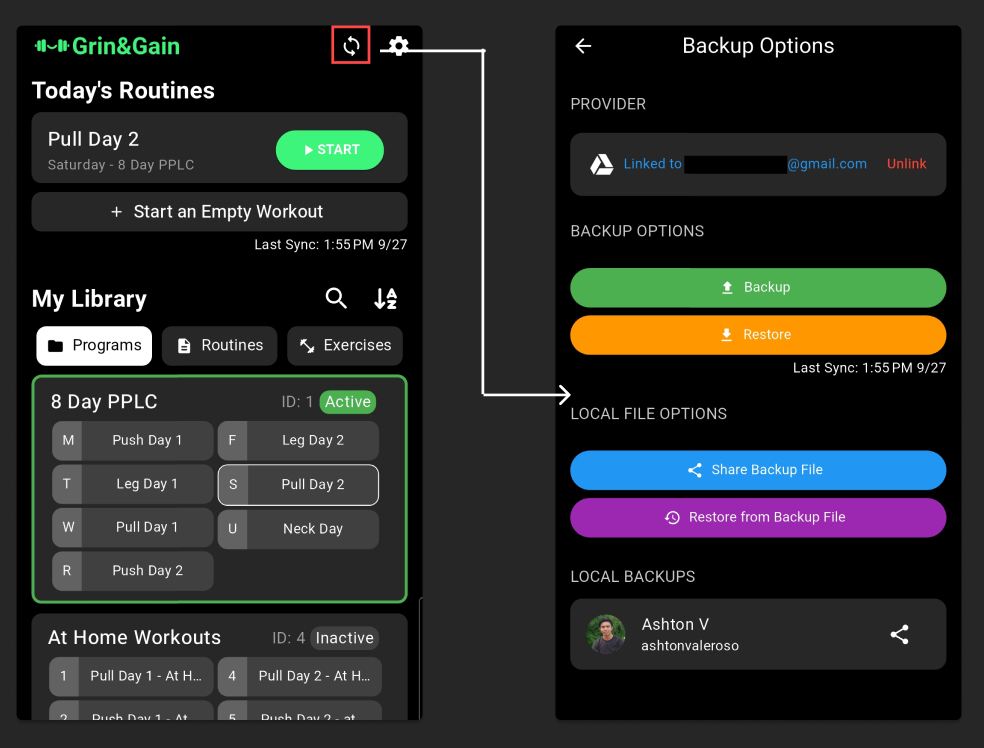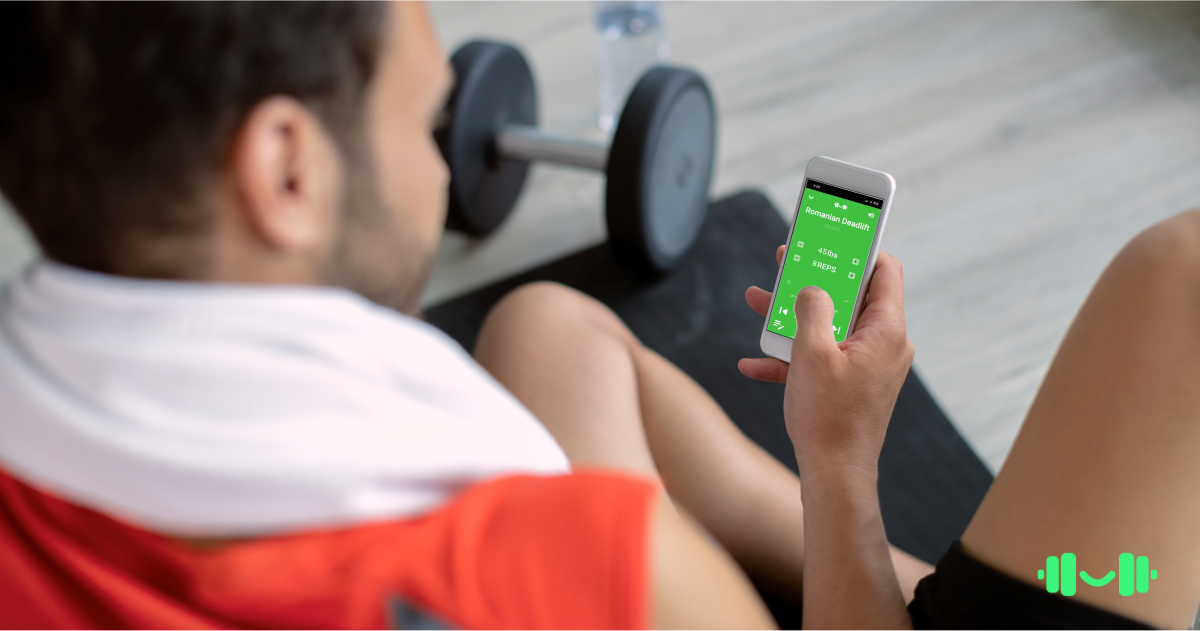Grin&Gain Feature Guide
By Ashton Valeroso
•August 19, 2025
Welcome to the Grin&Gain Feature Guide! This guide provides an overview of the app's key features and will help you learn how to track your workouts, monitor your progress, and gain valuable insights into your training. By the end of this guide, you'll be able to confidently use Grin&Gain to optimize your training and achieve your fitness goals.
Tracking and Adjusting Exercises
The Exercise Dialog makes it easy to track and adjust any type of exercise. You can log weighted, bodyweight, cardio, and even custom progressions by choosing from different Exercise Types and Action Types.
For simplicity, the default mode assumes all sets use the same weight and reps. If you prefer more detail, you can enable Individual Set Tracking to record each set separately.
To keep your training progressive, you can also set up personalized adjustments - either automatic or manual - to update your exercises for the next workout.
Exercise Types
Each exercise allows for different exercise types including weighted, bodyweight, and timed exercises. Exercise Types can be accessed by tapping the "Weight" button or your default exercise type found in the tracking tab in the exercise dialog. You can set your default exercise type in settings.
Action Types
The exercise Action Types can be accessed by tapping the "Reps" dropdown. The following Action Types are supported:
- Reps – Count how many repetitions you perform (e.g., 12 squats).
- Time – Track the duration with a timer (e.g., 30-second plank).
- Text – Add a note or custom instruction (e.g., "Hold stretch until comfortable").
Difficulty
Difficulty is a quick way to record how challenging an exercise felt — whether it was too hard, okay, or too easy. These ratings can also be used to make automatic adjustments to your workouts.
We recommend using Difficulty as follows:
- Too Hard: You couldn't complete the last set.
- Okay: You reached failure or had about 1 rep left in the tank.
- Too Easy: You had 2-3 (or more) reps left in the tank.
Individual Set Tracking
Individual Set Tracking lets you log each set separately instead of assuming all sets use the same weight and reps in standard mode. For timed exercises, it also allows you to record different durations for each set.
Adjustments
Exercise Adjustments keep your workouts progressing through progressive overload. After you record your Difficulty, automatic or custom adjustments appear on the end screen. You can choose between two modes: Automatic or Custom.
Automatic Adjustments
- Reps are increased or decreased within your set rep range first.
- Weight only changes once you've reached the minimum or maximum reps.
- Adjustments are applied to your next session after completing the current one.
- Average Values can be enabled to base adjustments on the average weight and reps across all recorded sets for exercises with Individual Set Tracking enabled.
Custom Adjustments
- Manually set how you want the exercise to progress, giving you full control.
Using the Exercise Player
The exercise player is our unique approach to fitness tracking. Unlike using a notebook or traditional workout tracking method, the exercise player allows you to track workouts quickly between sets with minimal input. Using the exercise player, you can make quick adjustments to your workout and view realtime stats and progress.
Action Mode
Displays what you are performing and logging for each exercise and lets you record any changes.
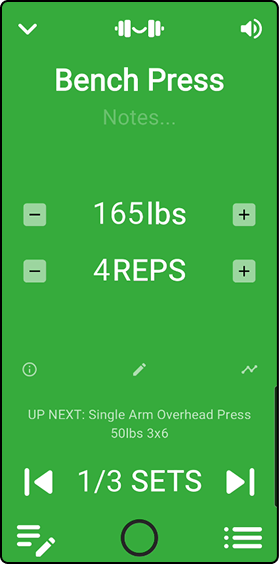
Rest Mode
Runs the rest timer for the current exercise.
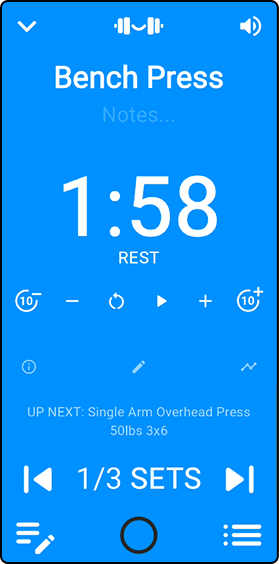
End Mode
Lets you record how you performed using the Difficulty feature. Automatic or Custom adjustments will also appear on this screen.
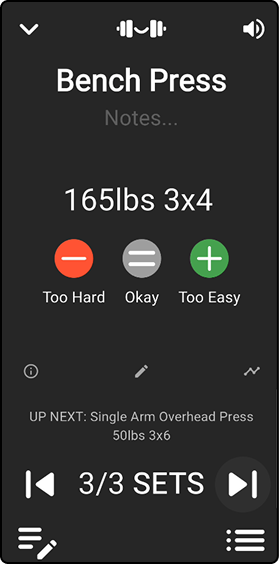
Exercise Queue
Shows all the exercises in your current session. From here, you can reorder, edit, superset, add, or remove exercises. You'll also see basic stats for the exercises you've completed so far.
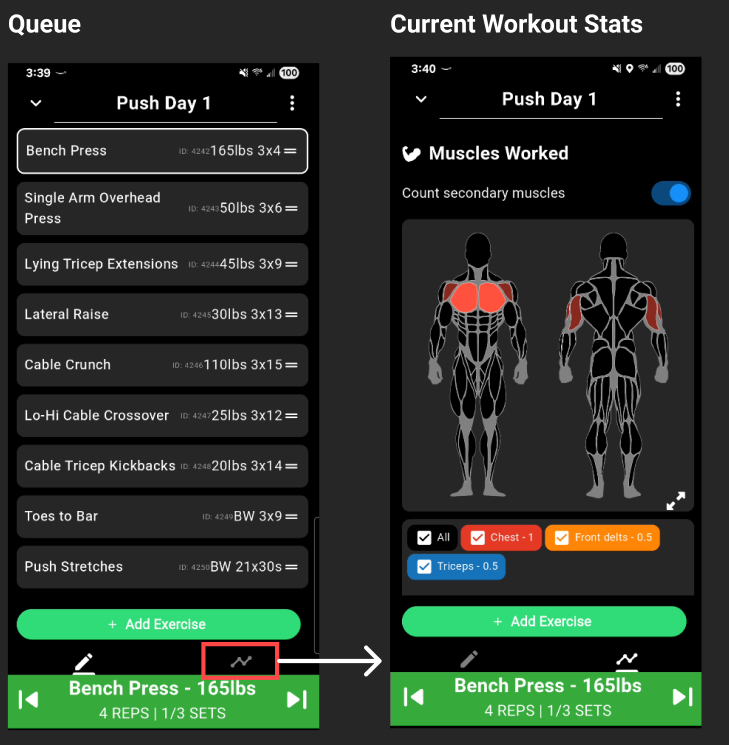
Superset Exercises
You can superset exercises in your queue or routine editor by long pressing an exercise or by enabling the selection mode.
To undo a superset, select one of the exercises in the superset, then click superset button to undo the superset.
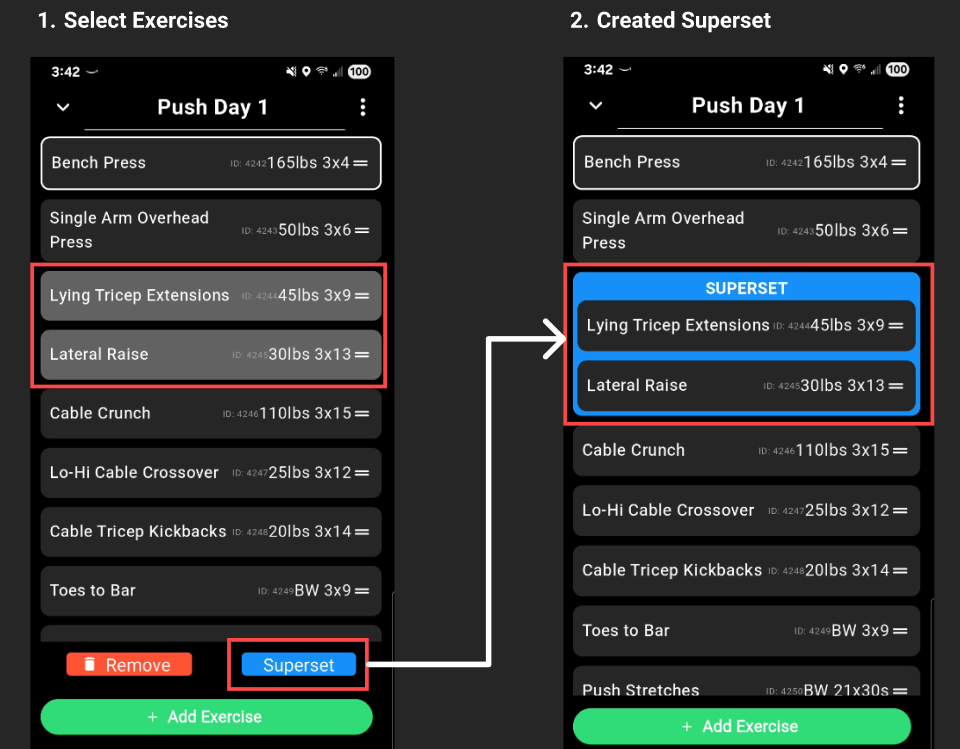
Understanding Statistics and Graphs
Grin&Gain provides a variety of statistics and graphs to help you track your progress across exercises, routines, and muscle groups. Strength is measured using Epley's formula to estimate your one-rep max (1RM), while other metrics help you monitor volume, intensity, and trends over time.
Exercise History Data
This table shows the history of exercise data. It can be found in the Exercise Statistics tab.
To see more exercise insights, open the dropdown at the top of the page.
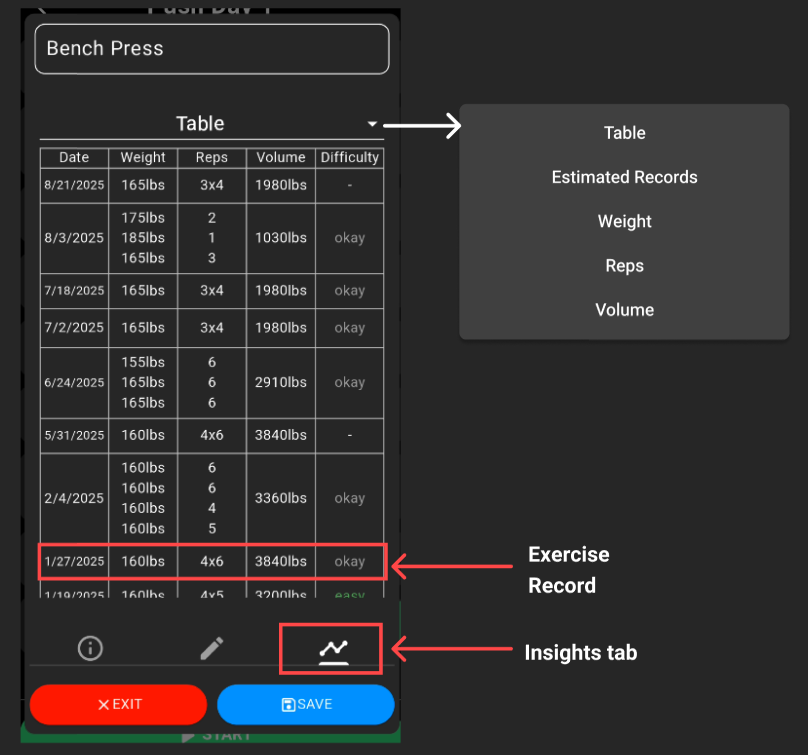
Estimated 1RM
Your 1 Rep Max (1RM) is an estimate of the maximum weight you could lift for a single repetition. This allows you to track your overall strength progress without testing a true max lift directly.
Grin&Gain calculates this automatically using Epley's formula, based on the weight and reps you record.
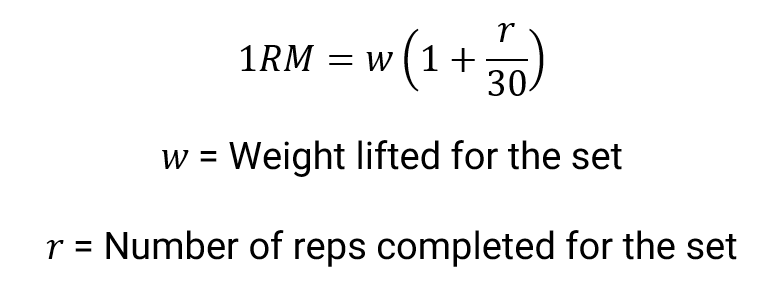
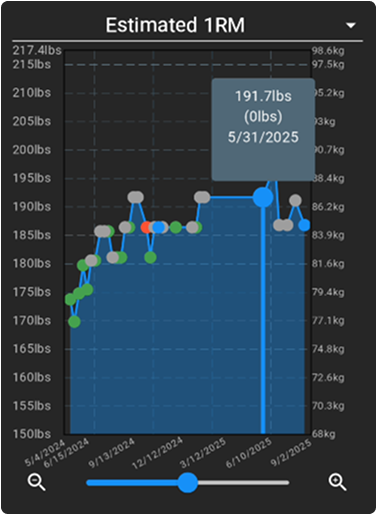
Average Strength
Average Strength calculates a weighted average of your estimated 1RM across all sets in a session. This gives you a more balanced measure of strength beyond a single top set.
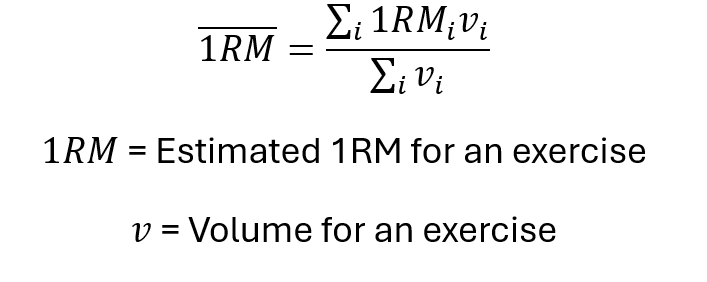
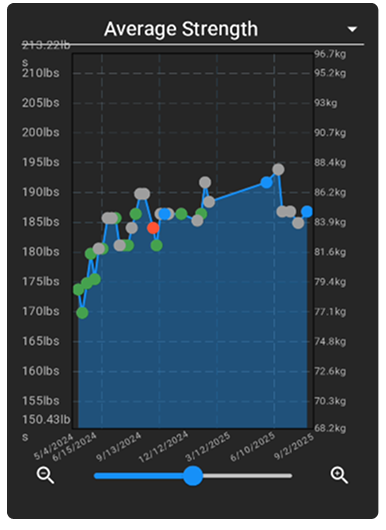
Volume
Training Volume is the total amount of work performed for an exercise (weight × reps × sets).

Relative Intensity
Relative Intensity compares the weight you lifted to your estimated 1RM, showing how challenging a set was relative to your max strength.

Muscle Diagram
The Muscle Diagram highlights how many sets you've performed per muscle group. The more sets a muscle group has, the brighter red it appears.
- Use the Unlabeled Exercises button to view exercises that don't yet have muscle data assigned.
- You can edit muscle data for any exercise under the Info tab in the Exercise Dialog.
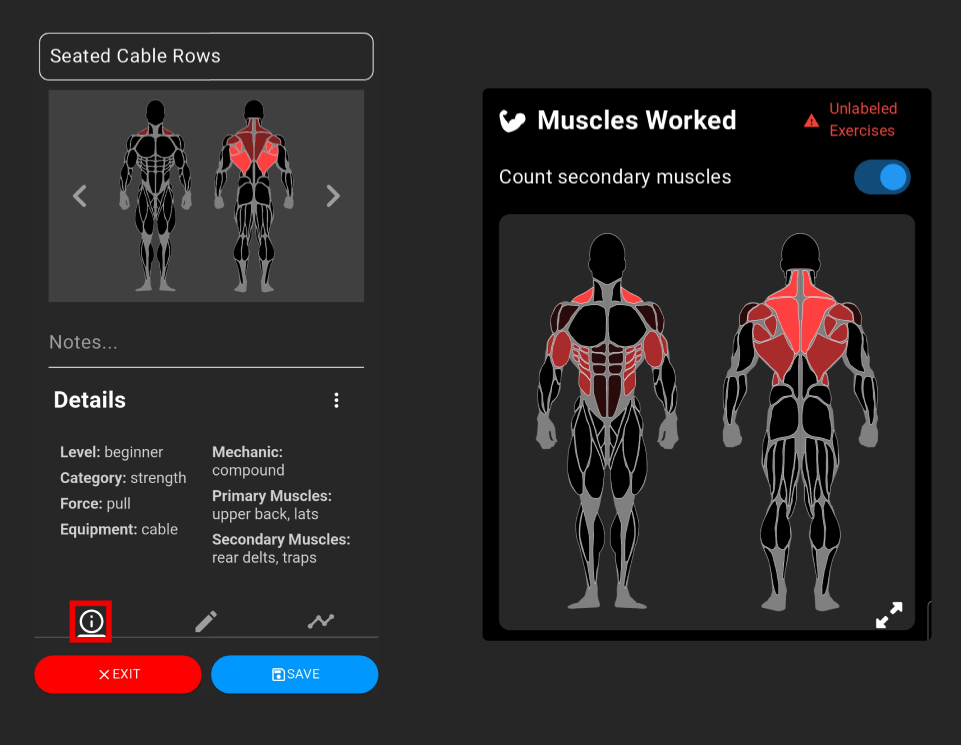
Weekly Improvements
The Weekly Improvements view (inside the Statistics page) shows how each exercise has progressed compared to the previous week.
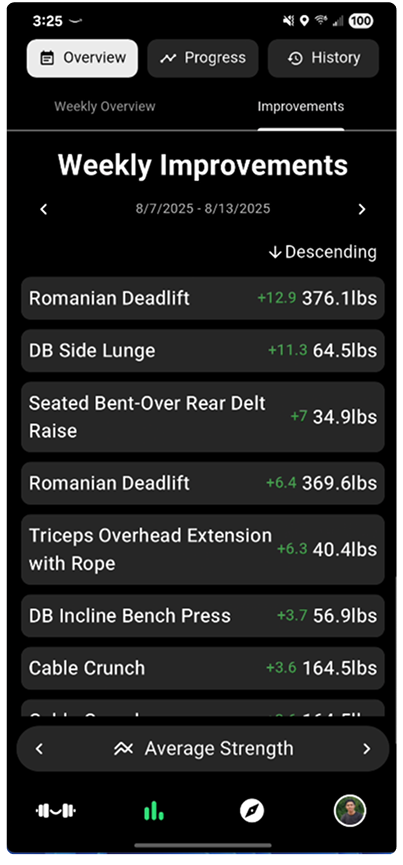
Training Metrics
On the Progress and Routine Statistics pages, you'll find graphs that summarize your Training Metrics:
- Average Strength – Normalized average strength across all sets.
- Average estimated 1RM – The average 1RM across all exercises.
- Training Volume – The sum of all volume for exercises at a given point.
You can customize these graphs by:
- Selecting time ranges (yearly, quarterly, monthly, or all-time).
- Viewing data per session, weekly, or monthly (x-axis).
- Filtering by all routines or a specific routine.
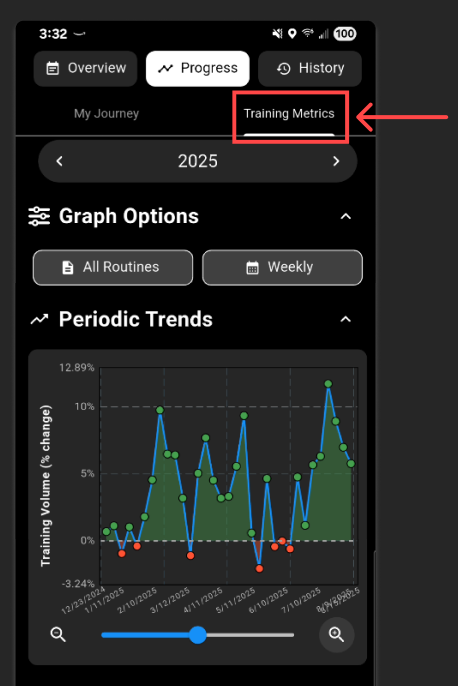
Periodic Trends
Periodic trends show the percentage change in your progress from a chosen starting point (year, quarter, or month). This makes it easy to see which exercises or muscle groups are improving the most.
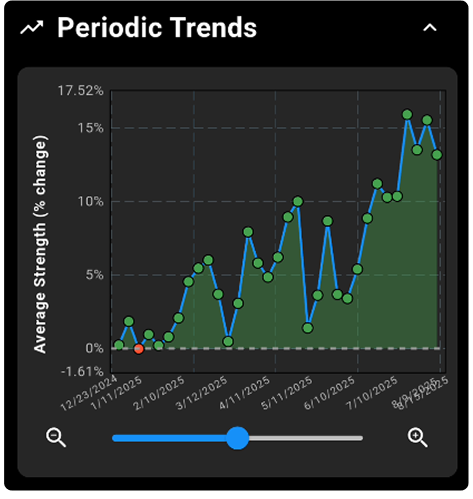
Training Progress
Training Progress displays the raw numbers for strength or volume averages. This view is best when comparing similar exercises side by side.
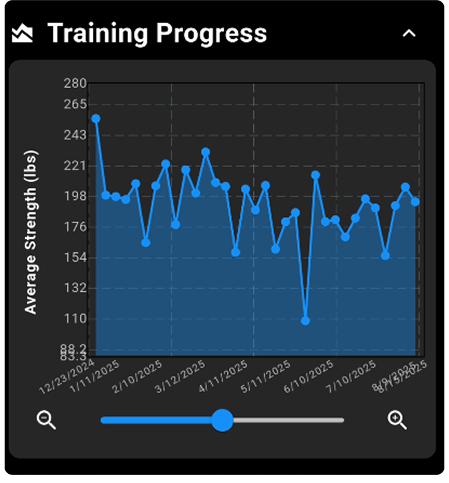
Program Scheduling and Notifications
To keep track of which workout you're performing on a given day, you can schedule your workout routines within Programs by the Daily and Weekly modes.
- Daily – Schedules are given a start day and date. This mode loops scheduling routines after the last numerical day. This mode is best for programs that repeat for more than 7 days.
- Weekly – Schedules workouts by day of the week.
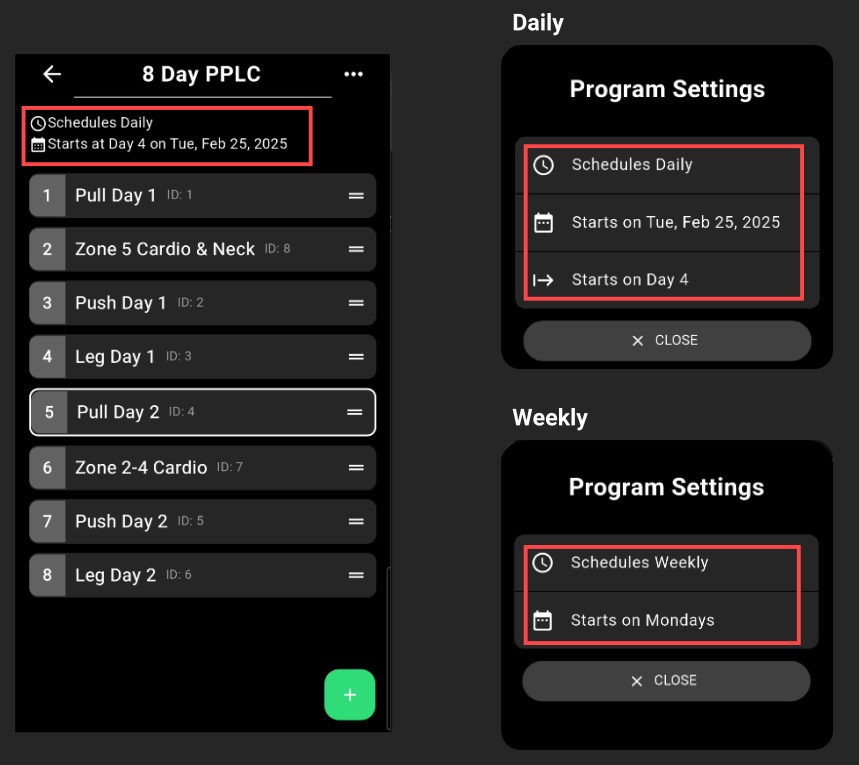
Backing Up Data
The best way to keep your fitness data safe is by linking your Google Drive account under the Provider section in the Backup Options page. This enables automatic backups after every completed workout, as well as daily backups every 24 hours.
You can also manage backups manually:
- Backup Options – Use the Backup and Restore buttons to save or retrieve your data.
- Local File Options – Save and restore a backup file directly to your device's storage.
- Local Backups – View all backup files stored within the app's documents folder.
